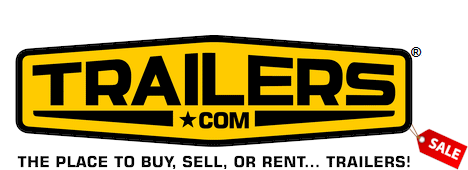
 |
Nevada Trailer Laws & Trailer Regulations
Nevada's laws and regulations for trailers are listed below:
Nevada Trailer Brake Laws
Every trailer, semitrailer, or pole trailer at least 1,500 lbs. and manufactured after July 1, 1975 must be equipped with service brakes on all wheels.
Trailers, semitrailers, house trailers, or pole trailers, manufactured before July 1, 1975 and weighing less than 3,000 lbs. need not have brakes on all wheels.
Every trailer, semitrailer, house trailer, and pole trailer equipped with air or vacuum-actuated brakes and every trailer, semitrailer, house trailer, and pole trailer exceeding 3,000 lbs. and manufactured after July 1, 1969 must be equipped with brakes acting on all wheels, and of such character as to be applied automatically and remain applied for 15 minutes in the event of a breakaway from the towing vehicle.
All trailers weighing more than 3,000 lbs. must be equipped with parking brakes adequate to hold the trailer on any grade on which it is operated, and in all conditions.
Every towing vehicle, when used to tow another vehicle equipped with air-controlled brakes, shall be equipped with 2 means for emergency application of the trailer brakes. One of these means shall apply the brakes automatically in the event of a reduction of the towing vehicle air supply. The other means shall be a manually controlled device for applying and releasing the brakes, readily operable by a person seated in the driver seat.
Every towing vehicle used to tow other vehicles equipped with vacuum brakes shall have a second control device that can be used to operate the brakes on towed vehicles in emergencies. The second control shall be independent of brake air, hydraulic and other pressure, and independent of other controls, unless the braking system is so arranged that failure of the pressure upon which the second control depends will cause the brakes to be applied automatically.
Nevada Trailer Dimension Laws
Total length: 70 feet (excludes safety and energy conservation devices); trailer length: not specified; width: 102 inches (excluding mirrors, lights, and other devices required for safety); height: 14 feet.
Nevada Trailer Hitch Laws
Safety chains required.
Nevada Trailer Signal Laws
Pole trailers need only have reflectors, stop lamps, turn signal lamps, and tail-lamps on the rearmost portion of the load.
On every trailer or semitrailer at least 80 inches wide, there shall be 2 front clearance lamps, 1 on either side; 2 rear clearance lamps and 3 identification lamps; and on each side, 2 side marker lamps and 2 reflectors, with 1 at the front and 1 at the rear.
In addition, on every trailer 30 feet or longer, there shall be on each side, 1 amber side marker lamp and 1 amber reflector, centrally located.
On every pole trailer there shall be on each side, 1 amber side marker lamp and 1 amber reflector at or near the front of the load.
Identification lamps shall be grouped in a horizontal row, with lamp centers spaced between 6 and 12 inches apart, and mounted as close as practicable to the vertical center line.
On trailers designed to carry boats, front and rear clearance lamps may be located on each side of the trailer at or near the midpoint of the trailer between the front and rear of the trailer to indicate the extreme width of the trailer.
Every reflector required above must be readily visible at nighttime at all distances between 100-600 feet.
Every front and rear clearance lamp and every side marker lamp shall be capable of being seen and distinguished at all distances between 50-500 feet.
Whenever motor vehicles and other vehicles are operated in combination and lights are required, only the rear vehicle’s lamps need be illuminated.
Nevada Trailer Lighting Laws
Every truck having a body that obscures a view of the road to the rear shall be equipped with a mirror carried in such a position that the driver of the truck shall be able to see traffic approaching from the rear.
All motor vehicles shall have a mirror so located so as to reflect to the driver a view of the highway for a distance of at least 200 feet to the rear of the vehicle.
Nevada Trailer Mirror Laws
Every truck having a body that obscures a view of the road to the rear shall be equipped with a mirror carried in such a position that the driver of the truck shall be able to see traffic approaching from the rear.
All motor vehicles shall have a mirror so located so as to reflect to the driver a view of the highway for a distance of at least 200 feet to the rear of the vehicle.
Nevada Trailer Speed Limit Laws
As posted.
Nevada Trailer Towing Laws
N/A.
|
|
|
Disclaimer: The United States Trailer Laws and Regulations by State by Trailers.com is not an inclusive list of laws, regulations and it should be used by reference only and not used for any other purpose. Trailers.com is not liable for incorrect or incomplete information. To report an error, incomplete or incorrect information, please send an email to statelaws@trailers.com. |